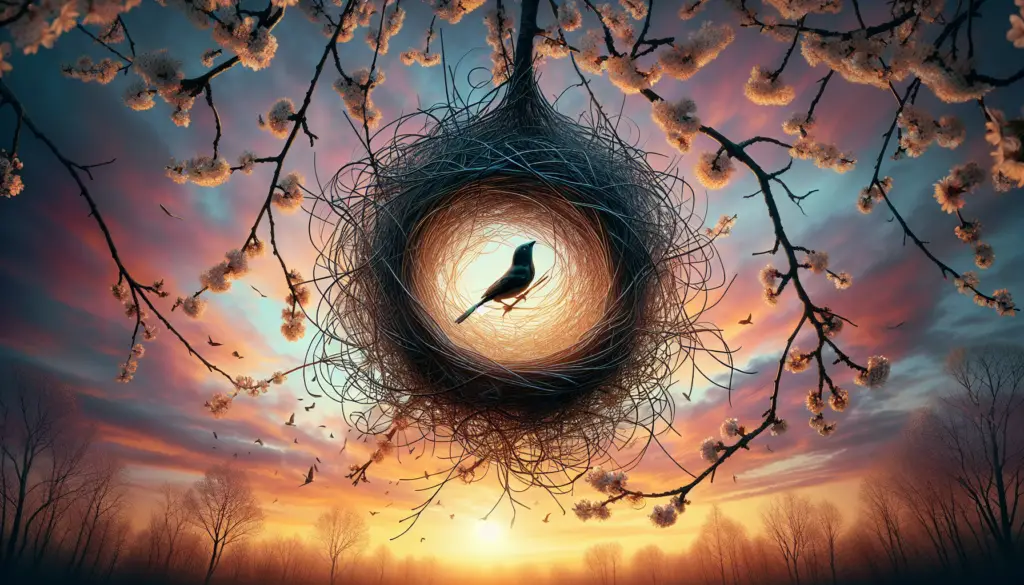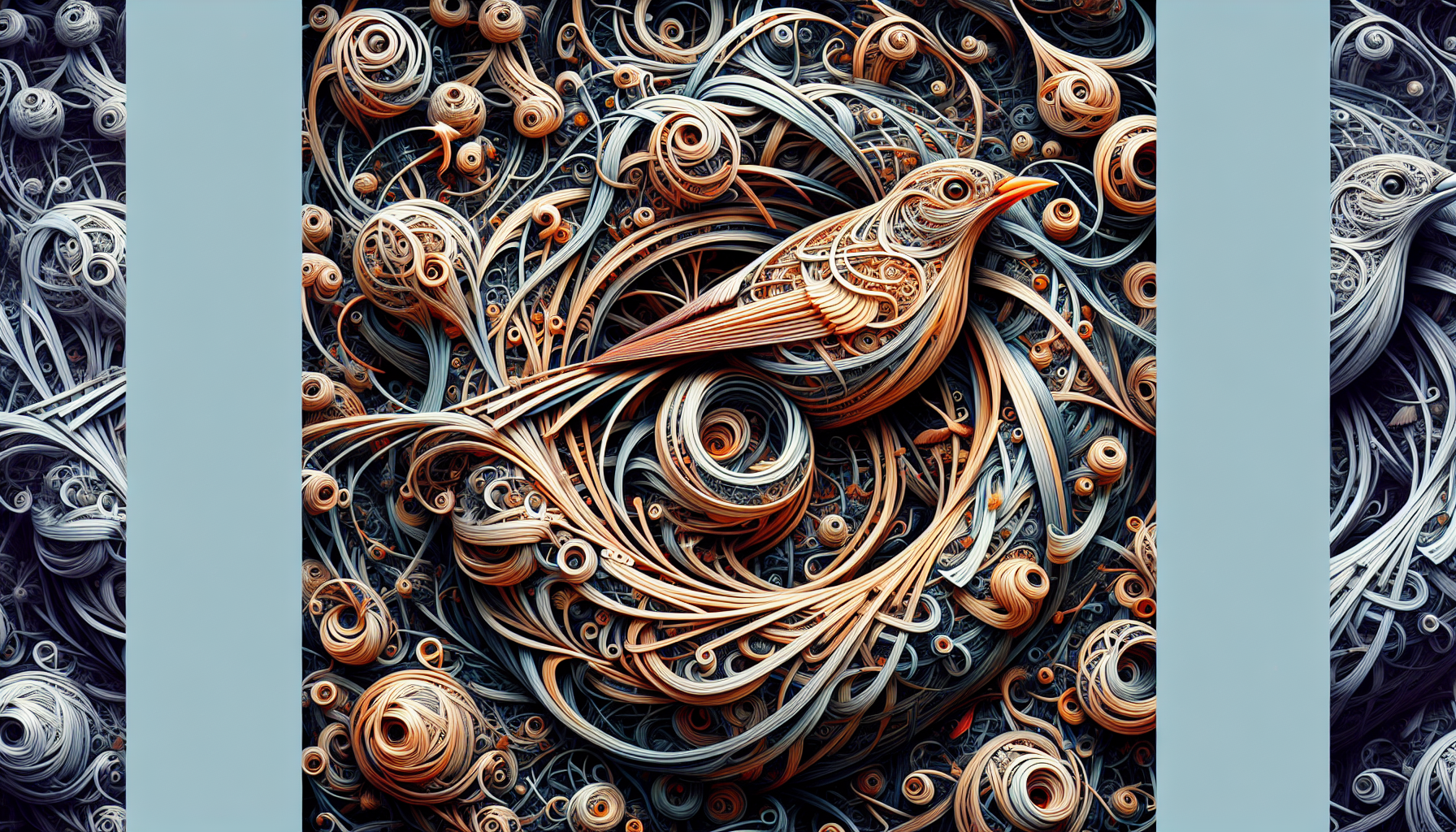With spring just around the corner, birds all over the country are busy preparing for the arrival of their young by building cozy nests up in the trees. Despite the short amount of time they spend on nest-building, birds manage to create nests that are completely unique to their breed. The process starts with sticks and twigs dropped into the chosen tree, eventually forming a loose outline of a nest. Birds then use their sharp beaks to manipulate and weave the fibers together, strengthening the nest with materials like spider webs or mud. Different bird species have their own preferences when it comes to nest-building, with some opting for cup nests made of twigs, grass, and moss, while others adhere their nests to buildings or trees using a sticky mixture of mud and saliva. And there are even birds that prefer to rent a spot by occupying the nests of other birds. If you want to help your local birds find the perfect place to live, consider buying a nest box for your garden.

The Nest-Building Process
When it comes to birds, building a nest is no simple task. It requires skill, precision, and a lot of hard work. The process starts with an unruly start, as sticks and twigs are dropped into the chosen tree. Some of these sticks may get lodged in the tree’s branches, forming a loose outline of a nest. But the birds aren’t done yet.
Using their sharp beaks, birds manipulate and weave the fibres of their nest together. This weaving process helps to strengthen the nest and create a more stable structure. But that’s not all – birds also rely on other materials to reinforce their nests. Some species use spider webs or mud to bind the sticks together, while others use their own saliva as a type of glue. This combination of materials and weaving techniques results in a secure and cozy home for the birds and their future offspring.

Different Types of Bird Nests
Just as there are different types of homes for humans, there are also different types of nests for birds. The type of nest a bird builds depends on its species and habitat. Let’s take a closer look at three common types of bird nests: cup nests, adherent nests, and renting a spot.
Cup Nests
The cup nest is the most common type of bird nest. It is shaped like a rounded cup or bowl and is what most people envision when thinking of a bird’s nest. Birds that build cup nests use various materials such as twigs, grass, moss, and leaves to construct their homes. They collect these materials and carefully arrange them to form the foundations of their nests. Some birds even incorporate natural fibers and plant materials found in the environment.
If you want to help birds that rely on materials for their nests, you can leave natural fibres and plant material in your garden for them to collect. Providing a muddy puddle can also be beneficial for certain birds. Species like house martins, song thrushes, and blackbirds use mud to reinforce their nests, so creating a muddy patch or puddle in your garden can support their nest-building efforts.
Adherent Nests
Unlike cup nests that are freestanding, adherent nests are built on the side of a structure or tree. Birds like swallows are known for constructing these impressive nests. To create an adherent nest, birds use a sticky mixture of mud and saliva. They shape the mud into a jug-like structure with distinct openings for doors. The mud serves as both an adhesive and a reinforcement for the nest, keeping it securely attached to the chosen surface.
Adherent nests are a testament to the ingenuity and resourcefulness of these small birds. Despite their size, they are capable of constructing intricate and functional homes that provide shelter and protection for their young.
Renting a Spot
While most birds prefer to build their own nests, there are some species that are happy to take advantage of existing nests or cavities in trees. Birds like tits and owls are known to occupy the nests of other birds or use natural hollows as their temporary homes. This behavior saves them time, energy, and resources, as they don’t have to start from scratch.
If you want to support your local birds in finding the perfect place to live, consider installing a nest box in your garden. These specially designed boxes provide a safe and secure spot for birds to raise their young. By providing nesting opportunities, you can help increase bird populations and have the opportunity to observe their nesting behaviors up close.
In conclusion, bird nest-building is a fascinating process that involves careful construction, weaving, and reinforcement. Birds use a combination of natural materials, such as twigs, grass, and mud, along with their own ingenuity to create homes that provide protection and warmth for their offspring. Understanding the different types of nests birds build can help us appreciate the diversity and complexity of their behavior. So next time you come across a bird’s nest, take a moment to marvel at the incredible engineering skills of these feathered architects.

My name is Shane Warren, the author behind Your Bird Buddy – your ultimate guide to the wonderful world of birds! Unleash your inner avian explorer as we delve into a vibrant library of knowledge dedicated to all things feathered. From learning about diverse bird species from across the globe to understanding their captivating habitats and behaviors, I’m here to fuel your passion for these magnificent creatures. Not only that, but I also provide valuable insights on being a responsible and informed pet bird owner. Join our vibrant community and let’s celebrate the feathered wonders of the world together – one chirp at a time. And be sure to join our Your Bird Buddy Community over on Facebook!


Comments are closed